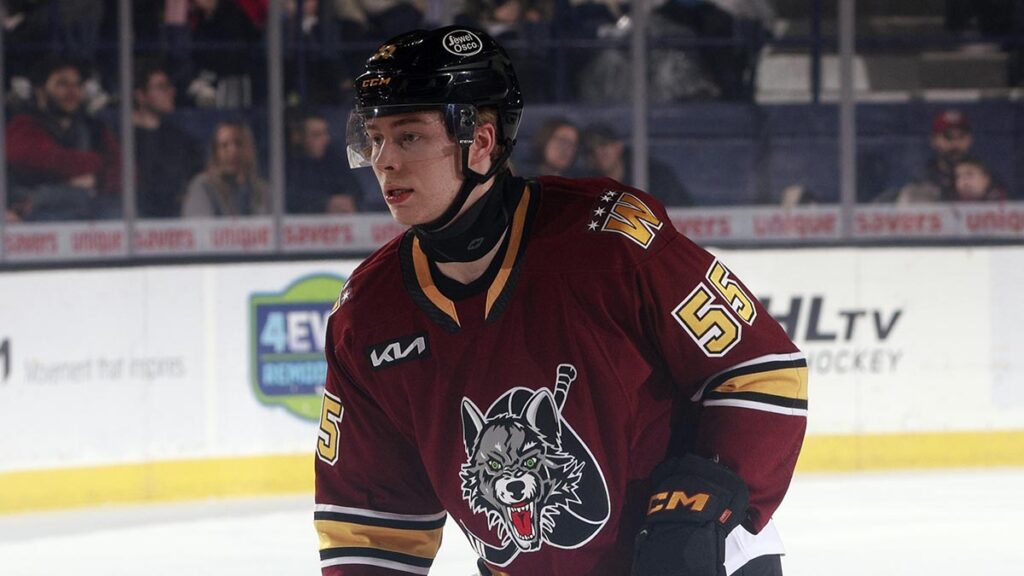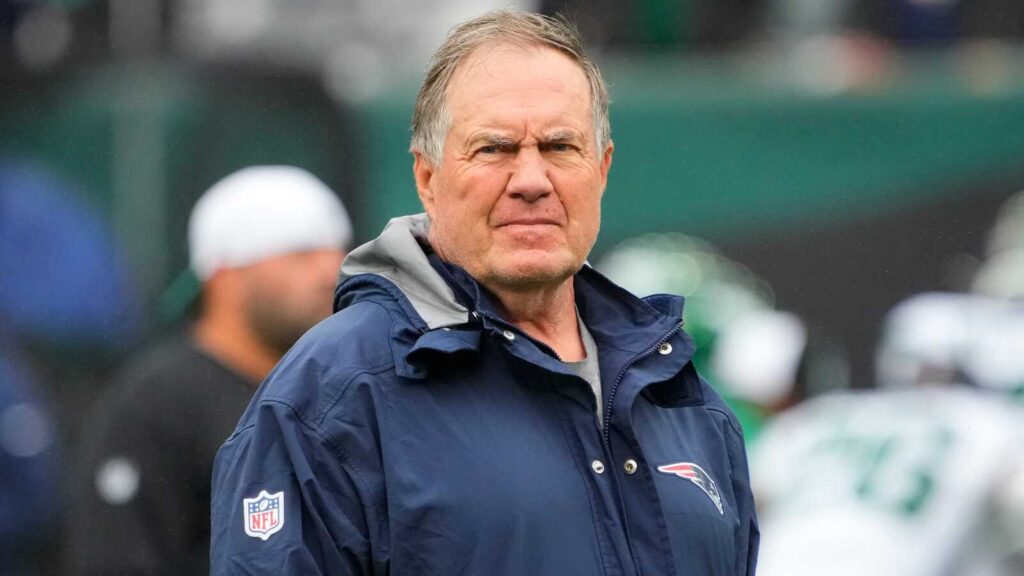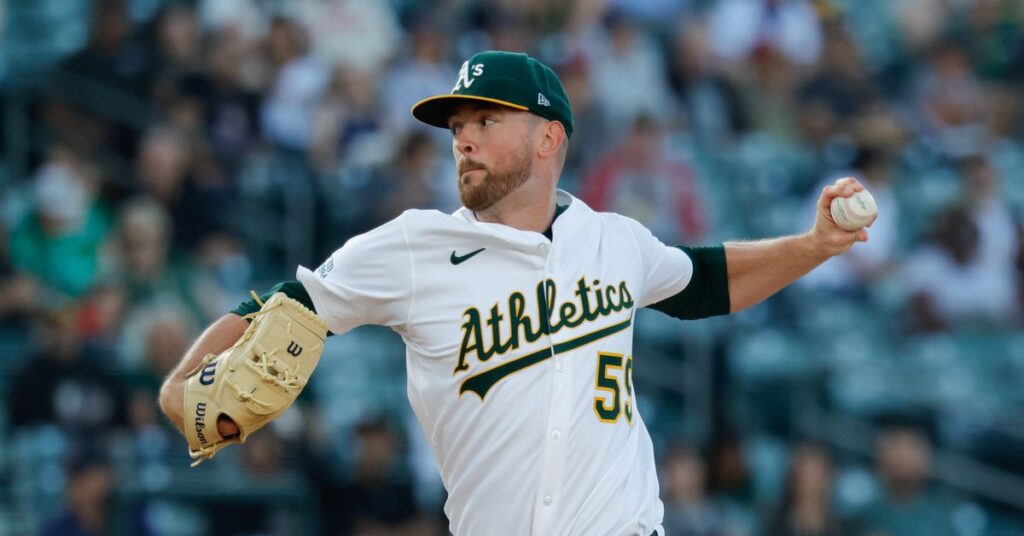Editor’s note: This is the first in a series of stories breaking down the film of some of the top freshmen recruits for 2022-23.
Nick Smith Jr. is going to be a star. That’s pretty easy to determine when you watch the way he shoots and glides and scores at 6-foot-5. Smith is going to put up numbers at Arkansas, and the industry belief is that he’s going to be a lottery pick in 2023.
We’ve almost got to the point where we see the rankings and mock drafts and believe it’s inevitable. It feels premature to predetermine these outcomes for these young players. Sometimes, like in the case of a Quentin Grimes, someone who entered college with similar hype and expectations, players need time to develop before they’re ready for the NBA or even ready to help a big-time college program win.
It takes a special type of talent and basketball maturity to hit right away, and while nothing is a given, this is what pops on tape with Smith. A readiness. Arkansas coach Eric Musselman says he fell in love with Smith’s “competitiveness, his toughness and his winning mindset.” Those seem like buzzwords that any coach would use, but this is what that looks like.
Here is Smith in the Peach Jam final last summer, showing an understanding for the right play. Brandon Miller sets a ball screen for him, and eventually rolls to the block. Smith recognizes the switch and passes to teammate Nick Kramer on the wing, who has a better entry angle. Watch Smith when Kramer shoots a 3 instead:
Smith’s scoring ability is special, and we’ll get to that, but it’s his ability to consistently make the right read that separates him from many players his age. In pick-and-roll, he quickly processes all three levels — how his man is guarding it, how the screener’s man is guarding and what the help is doing. It’s that third level that most players start to learn in college, but Smith is already there.
“He makes the right pass,” Musselman said. “He’s wired to be a scorer, but he also has vision and willingness.”
Smith’s decisions are quick. He anticipates what help defenders are going to do and usually leaves them in no man’s land, where they’re too late to get a deflection and too committed to recover back to their man. He does a good job of using his eyes to move defenders where he wants them and is comfortable when he gets in traffic.
Some of the passes that weren’t completed were the right reads and are more likely to get finished by better athletes. The Razorback bigs will learn to love playing with Smith because he’s got the feel to know when they’re going to be open before they do. If a player like Missouri transfer Trevon Brazile can develop chemistry with Smith, earning his trust and understanding when passes could be coming, he could really benefit. Brazile, who Musselman sees as a good pairing with Smith, is the prototype for a lob catcher. He’s a pogo stick who flashed potential as a skinny freshman at Missouri but his production was hindered by poor guard play. The joy Brazile played with this summer surrounded by better talent was apparent. He’s also bulked up, and he had a different kind of swagger playing with the Razorback guards. He is a legit breakout candidate.
Smith could also help Arkansas in an area of weakness last season: 3-point shooting. He’s a good shooter, but he also should generate easy spot-up looks for teammates by drawing help and finding the open man. This is where his size is a real asset. When he gets in traffic, he doesn’t panic because he can see over the defense. “He’s really good at skip passes,” Musselman pointed out. “He’s got good length.”
That length also helps Smith from a finishing standpoint. Among players with at least 20 attempts at the rim in the half-court setting during the 2021 Nike EYBL season, he shot a circuit-best 72.7 percent. Smith doesn’t have to get all the way to the basket either.
The numbers say that the floater is one of the worst shots in basketball. Last season across men’s college hoops, Division I players made just 37 percent of floaters, according to Synergy’s tracking. The mid-range, which is like hot lava to numbers nerds, is basically the equivalent to the floater. D-1 players made 36.8 percent of 2-point jumpers last season, per Synergy.
Smith’s floater is an outlier, one reason why he’s such an effective scorer. He made more runners (16 in 15 games) than anyone on the circuit and shot 50 percent on those shots.
“We’re really into the analytics here, but we’re not so twisted that something that somebody does good we’re gonna tell him not to,” Musselman said. “The one thing for any player when they come from high school to college or college to pro, especially if you’re a guard, is when you take the ball to the cup, is there an adjustment with you getting your shot blocked? He doesn’t have that because of his floater and him understanding the second line of defense and when to release a shot. He doesn’t over-penetrate into areas where there will be shots blocked because of his confidence in his floater.”
Smith has the total package when it comes to finishes: runners, floaters, wrong-footed layups and pull-ups. He’s really good at getting to his spots by reading the feet of the defenders and attacking their hips.
Smith will likely take turns with fellow freshman Anthony Black playing on and off the ball. Smith is capable of getting buckets from the shooting guard spot. He’s comfortable running off screens and in catch-and-shoot situations.
Everything Smith does is so smooth and at his pace. Where that really stands out is in late-clock situations. He’s always aware of the time and never hurried.
“I think his maturity late game is at a high level,” Musselman said. “Number one, you gotta want the ball in those situations, and then you got to deliver. He’s got the mindset to take on the responsibility. And then two, he’s got the gift to make plays and he’s got good shot-clock awareness.”
Musselman replayed a shot Smith made this summer during the Razorbacks’ Europe trip, when he got the ball at the end of a half and calmly dribbled into a long 3 that he buried.
“He knew exactly how many dribbles he had to get within range,” Musselman said. “In a short sample size overseas, his teammates got a good feel of how well he can deliver.”
Smith certainly proved himself on that trip, averaging a team-best 19.3 points over the first three games. (His playing time was limited in the fourth game because of a minor leg injury.) The most difficult leap that Musselman knows Smith will have to make is on defense, getting used to their schemes and terminology.
This is where it’s smart to just bet on Musselman that he’ll get through to his young star and his overturned roster. The Razorbacks are coming off finishes of 10th and 11th in adjusted defensive efficiency the last two years. They’ve yet to be elite on the offensive end, but they’ve also never had a talent like Smith. Musselman is the type of coach who’s willing to let his stars rock — see JD Notae’s 32.8 percent shot rate last year — and Smith is the perfect young star. Obviously, he has the skill set, but it’s his desire to make that right play that will help him win over older teammates right away. Musselman sees it already, saying “he’s a guy that people like playing with.”
Arkansas has to replace four starters, but Musselman is as good as it gets right now in college basketball at reloading and winning. It’s not always smart to bet on freshmen-led teams unless those freshmen are really special. Smith and Black might be those guys. Jordan Walsh is also a special talent and has the potential to be a star on defense with his length and athleticism. Smith is the total package. He’s plenty capable on the defensive end, but it’s his offensive skillset and intellect that set him apart. If any guard in this class is ready to produce and help his team win right away, it is him. His game, his feel and his poise is worth betting on.
(Top photo of Nick Smith, right: Steph Chambers / Getty Images)






